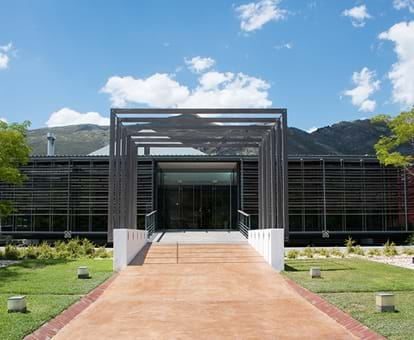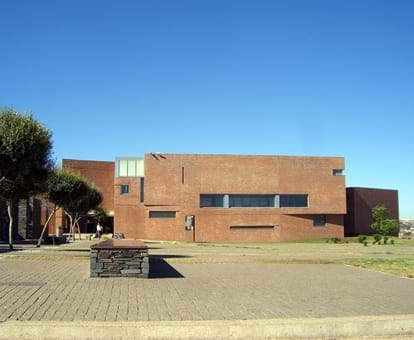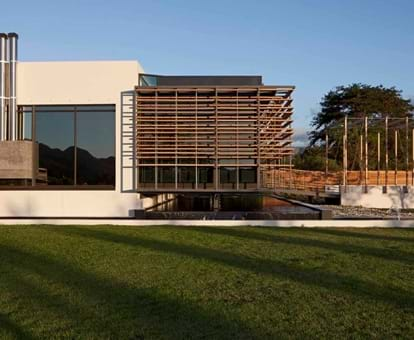By creating an account, I agree to the
Terms of service and Privacy policy
Choose your country and language:
Africa
Americas
Asia Pacific
Europe
IIf calamity were to strike humanity, and archaeologists of a distant future were to enquire about how we lived, they would draw upon our architecture to paint a picture of who we were.
They would wander along the narrow traces of our townships, marvel at our resilience in the face of adversity. They would comb through the delicate ruins and begin to imagine the sounds and smells, imagine the dark wending spaces, the makeshift soccer fields bubbling with the laughter of children, the sound of communities debating their future in municipal buildings.
They would find our cities, admire the layers of the history of occupation captured in the friezes of the facades of buildings in urban historic cores, they would imagine the dynamic streets of Cape Town and Johannesburg, and the festive beachfront of Durban. They might come across artwork, captured in the art district of Woodstock and Salt River in Cape Town, the re-imagined warehouses speaking to a lost textile industry but born again as a place of architectural, cultural and urban renewal. They would marvel at the diversity of cuisine, the richness of the culture, and the excellence of certain aspects of the architectural design - the modesty, the shrewdness, the bravado. The contrast of the various architectures of the city would be delightful as well as complex; the architecture would reveal the substantial design talent of the country, but also highlight the struggle to address inequality, the great challenge of their time.
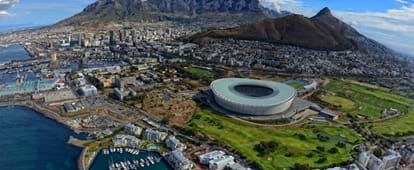
TThey would find the silo district in the VA Waterfront, at the cusp of where the sea meets one of most the iconic mountains in the world, and behold a new cultural precinct - the Zeitz MOCAA museum, housing, restaurants and signature architecture of Africa and the world’s best.
Delving further along the coastline they would encounter the lovely ruins of the promenade and the Cape Town stadium and urban park, a place where architecture, public life and nature used to interplay. The architecture would take a dramatic turn and begin to reflect some of the most famous beaches in the world at the time, festooned with stunning contemporary architecture locked into the granite slopes of Table Mountain, dramatic gestures of glass, steel, stone and aspiration.
And yet the architectural story would be incomplete without a journey into the winelands where hectares of various cultivars have become the engine room for a globally-renowned wine industry. The architecture of wine cellars and tasting rooms, blending the rural and the urban would reveal the highest levels of luxury, excellence and care. A land where contemporary architecture houses the spirit of the landscape, and the unconscious adoration of Dionysus.
These archaeologists would find many gems of architectural excellence, award-winning schools in semi-rural communities, community centres where the dream of a united South Africa would be played out daily.
FFrom city to city, they would find our architecture a curious blend of global modernity and local specificity, from the organised chaos of our meat markets to the polished office parks of Sandton. They would discover that our cities became a place for urban research where scholars would gather and ask what we could learn from the architecture and urbanism of South Africa to understand our own challenges, the folly of our shopping centres eroding our cities, the hope of our airports.
From the dramatic narrative architecture of Freedom Park, the Hector Pieterson Memorial and the richness of Vilakazi Street, the only street on earth where two Nobel winners lived, they would see our architecture as one of courage. They would see the Taal Monument, forever an architectural symbol of segregation long tumbled from where it sat imperiously on a hill, and parts of the Johannesburg inner city, abandoned during the transition to democracy with hijacked buildings and a precarious existence, and then evolved into a place of repurposed architecture and creativity. Mining infrastructure stripped of its purpose as the resources dwindled would be revealed as the spine for new forms of architectural meaning and possibility.
The architecture of the greatest global stage of our time, the stadia of the World Cup Soccer in 2010, would both show our commitment to being a part of the world, but to also bring the world to us, and archaeologists would see how we redesigned our streets and imagined new architecture on our beachfronts to bring us closer to a better South Africa.
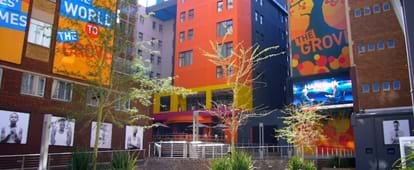
BBut delve further into the interior of our land and archaeologists would find the architecture of conservation and leisure - game lodges tucked into the landscape, where modern African design could bring people closer to nature and the Big Five. They would find architecture of calmness and serenity built from local materials and forming the backdrop for interaction with the wild.
The archaeologists would thus bear witness to the mistakes of our time, and the uneven quality of architecture would tell a story of a society in progress.
But above all, they would realise that, unique among all the nations of the world, the architecture of South Africa would tell an amazing story, a unique human experiment to triumph against our lesser selves but to carve beauty where beauty was denied, to make architecture both a matter of joy and a human right.

AAbout the author
Mokena Makeka studied architecture at the University of Cape Town and graduated with a distinction. He is the founder and principal of Makeka Design Lab, an award-winning company specialising in design solutions on an urban, architectural, cultural and installation scale. He has given talks at the SAIA Biennale Convention, Green Building Conference, TEDx Stellenbosch and more. He serves on numerous boards, including the Isandla Institute, Bush Radio and the Cape Town Heritage Trust.
Related articles

